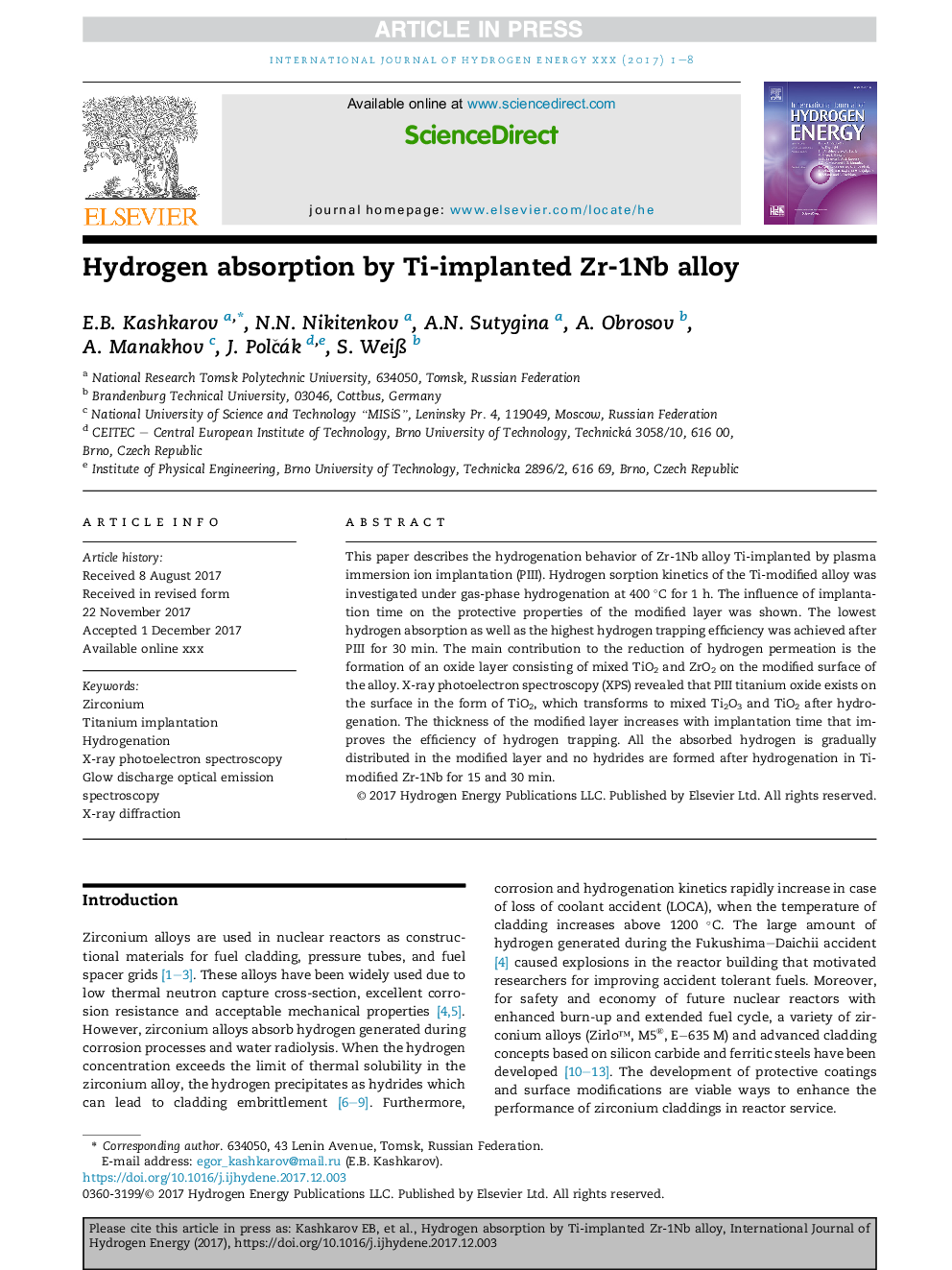| Article ID | Journal | Published Year | Pages | File Type |
|---|---|---|---|---|
| 7708358 | International Journal of Hydrogen Energy | 2018 | 8 Pages |
Abstract
This paper describes the hydrogenation behavior of Zr-1Nb alloy Ti-implanted by plasma immersion ion implantation (PIII). Hydrogen sorption kinetics of the Ti-modified alloy was investigated under gas-phase hydrogenation at 400 °C for 1 h. The influence of implantation time on the protective properties of the modified layer was shown. The lowest hydrogen absorption as well as the highest hydrogen trapping efficiency was achieved after PIII for 30 min. The main contribution to the reduction of hydrogen permeation is the formation of an oxide layer consisting of mixed TiO2 and ZrO2 on the modified surface of the alloy. X-ray photoelectron spectroscopy (XPS) revealed that PIII titanium oxide exists on the surface in the form of TiO2, which transforms to mixed Ti2O3 and TiO2 after hydrogenation. The thickness of the modified layer increases with implantation time that improves the efficiency of hydrogen trapping. All the absorbed hydrogen is gradually distributed in the modified layer and no hydrides are formed after hydrogenation in Ti-modified Zr-1Nb for 15 and 30 min.
Keywords
Related Topics
Physical Sciences and Engineering
Chemistry
Electrochemistry
Authors
E.B. Kashkarov, N.N. Nikitenkov, A.N. Sutygina, A. Obrosov, A. Manakhov, J. PolÄák, S. WeiÃ,
